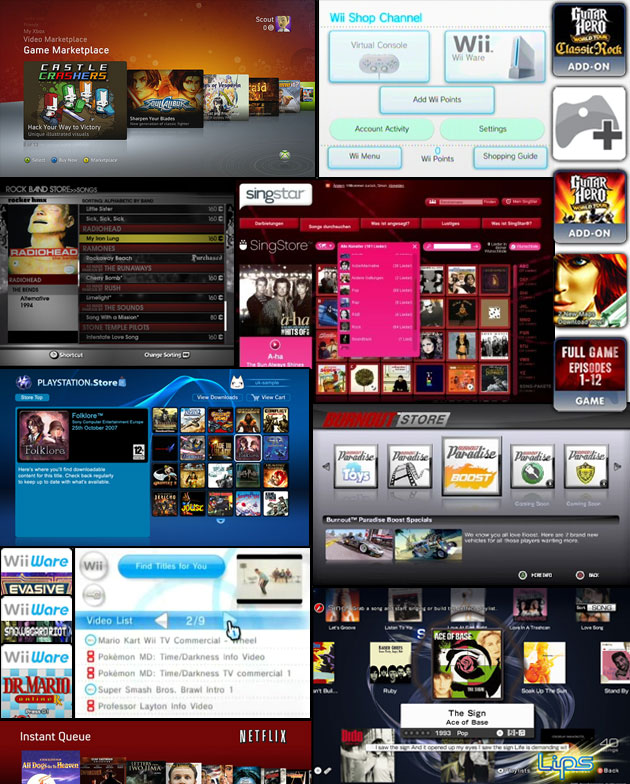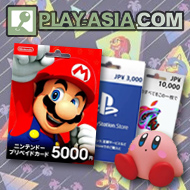The Price of Progress Part 3: Marketplaces

Sorry for the oversized image above but its swollen kilobytes say almost more than I can put into words. The advent of the Xbox Live Marketplace in 2006 was a bold move on Microsoft’s part, eschewing the traditional brick+mortar distribution channels and — for better or worse — allowing console games to be released and “fixed” at a later date. But that’s a whole other discussion.
Thanks to Microsoft’s marketplace we’ve become accustomed to weekly downloadable releases in the form of add-on content, videos, themes, demos, and entirely new games. Microsoft keeps the official numbers close to their chest but it’s become apparent that there’s a lot of money and mind share in keeping your games updated and relevant through these marketplaces. Sony was quick to announce their own online store — the PlayStation Network — though it went through some major redesigns in its first year. Even Nintendo, who refused to take their GameCube online last generation was quick to see the profitability behind weekly releases of both old and new games and now has three digital storefronts across the Wii and DSi.
And then there’s the music games again. Each of the big four have their own storefronts that live in separate branded shops beyond the reach of the console marketplaces. It makes sense to keep players within the “experience” of your game but more and more titles are introducing shops of their own and adding layers of unique interfaces. So you go through the Xbox 360 dashboard to your game interface to its own shop interface that’s usually pretty different from the rest of the game. Carry this formula across a dozen games, across three consoles and the whole thing starts to feel congested and confusing.
Another concern I have with all these marketplaces is content control and longevity. Think about your own town for a minute and picture all the sole proprietorships — the Mom & Pop stores — that have come and gone over the years. Empty retail space for lease with a dirty outline over the door that echoes “The Pit Stop” or “Scrapbooking Unlimited”. Just because Burnout Paradise has a storefront of its own within the game doesn’t mean there’s always going to be something new. The time will come when Criteron moves on and the Burnout Store will sit dormant, gathering digital dust. Microsoft’s and Sony’s respective music games — Lips and SingStar — serve as another example of struggling storefronts. Updates are announced on a monthly basis for Lips which gives people plenty of time to forget which songs are coming which week while SingStar goes silent for months on end with no new releases at all. Did you even know that there’s a LittleBigPlanet skin for SingStar or that they redesigned the SingStore interface to resemble the PlayStation Store? It’s too easy for these smaller game updates to get lost in the buzz of the big titles like a great sale at that corner store getting drowned out by Wal-Mart’s new Low Price deals.
I’m not saying we need a single black & white interface across all platforms and all games. I understand the allure of having your own in-game shop — it’s like having a website or a blog or a podcast for your game — but some content is best represented right alongside all the rest in a marketplace interface that your users already understand. Let Microsoft, Sony, or Nintendo host and serve up your add-ons, it gives you more time and money to make the next batch of stuff even better.












